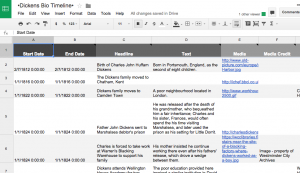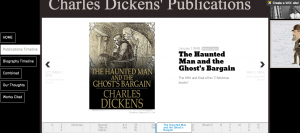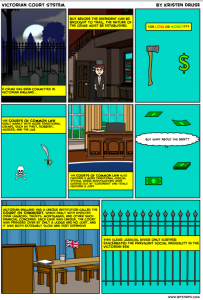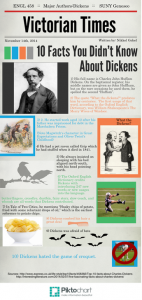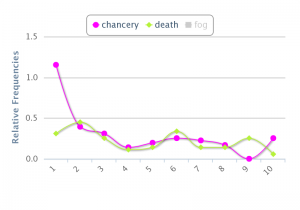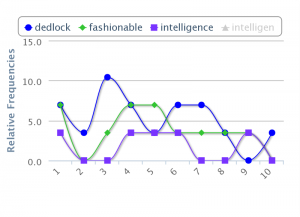There have been countless “re-mixes” inspired by the work of Charles Dickens. These re-mixes come in many forms: books, television shows, movies, and even musicals. Our group was tasked with finding and analyzing several of these different re-mixes. We wanted to compare these new adaptations to the original works by Dickens to try to find and explain any common trends and changes. Due to the incredibly large number of Dickens re-mixes that exist, we decided to focus on two of the most commonly re-made Dickens stories. Each member of our group researched one re-mix of Oliver Twist and one re-mix of A Christmas Carol. We then created a Tumblr page in order to post our findings.
When studying our chosen re-mixes, we looked at a variety of topics. For example, we analyzed the medium that was used to create the re-mix (whether it was a book, film, etc.) and then discussed possibilities of why the creators made this choice and how effective it was. By looking at re-mixes that covered a wide range of media, we were able to examine several different ways that the novels of Charles Dickens could be changed by the addition of pictures or music and the effect that these changes had on the story. We also analyzed the differences and similarities in plot and dialogue between the re-mix and the original text. Then, using Tumblr, we were able to divide our discoveries into easily-absorbed snippets presented in a visually intuitive manner. The use of the hashtag system allows a visitor to the page to search for and easily find information relevant to their interests. Choosing to create a Tumblr page also gave us the ability to intersperse images, video, and audio in with the text to give quick, sensory context to the information we present. The Tumblr format also lets us break up the analytic posts with humorous diversions, keeping the reader’s attention and giving a greater sense of Dickens’ continuing influence on the modern world.
For Oliver Twist, we looked at a 2005 movie adaptation by the same name, as well as Oliver! The Musical, Oliver and Company from Disney, a “Cozy Classics” book version of Oliver Twist, a silent film from 1922, and a film titled Twisted. These re-mixes provide a sample that represents multiple media and covers a wide span of time. While each of these adaptations was unique in its own way, there were some recurring patterns that appeared in most of these works. The first is that the plot line of these re-mixes was, for the most part, simpler than the original Oliver Twist. Characters would often be left out (such as Monks and the Maylies) in order to simplify the story. This is understandable, as the original novel has a lot of content that is difficult to communicate through the medium of these re-mixes. Another common change was that which was made to the character Fagin. In several of these re-mixes, Fagin provides a source of humor and is a much more sympathetic character than he is in Dickens’s novel. This could be because of the sheer amount of “bad guys” in Oliver Twist. Changing Fagin’s character allows more emphasis to be put on a different, more appropriate antagonist (such as Sikes) while also adding humor to the story. A more thorough analysis of the Oliver Twist re-mixes we studied can be found on our Tumblr page.
Unlike Oliver Twist, most of the re-mixes we looked at for A Christmas Carol stayed fairly true to the original story. These re-mixes were The Muppet’s Christmas Carol, a movie adaptation from 1951 originally titled Scrooge, an 1844 dramatization of A Christmas Carol, A Christmas Carol graphic novels, and Mr. Magoo’s Christmas Carol. Nearly all of these versions were fairly accurate portrayals of Dickens’s story. While changes for definitely made (such as including muppets as main characters), the storyline itself remained consistent. This is likely because the story is so simplistic that it is able to be adapted a multitude of ways and still work. A Christmas Carol is a holiday classic for a reason, and the story has endured for years without undergoing any prominent changes. It is difficult to improve the story, and clearly most (successful) re-mixes did not try.
For more information, here’s the link to our Tumblr page!
http://english458dickens.tumblr.com/tagged/dickens/chrono
Contributors: Courtney Cavallo, Klarisa Loft, John Panus, Rachel Campbell, and Michael Adams

